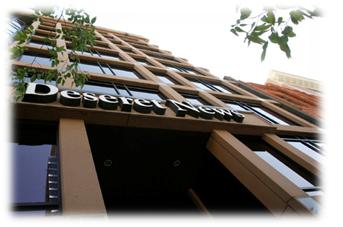So yesterday we took a look into how radio companies are – or aren’t – thinking about the development of business models for streaming and mobile.
Today, we’re going a step backwards into the frightening world of print to uncover whether there’s anything we can learn from the Fourth Estate. Often the lesson is about what not to do, but a new article posted on the Journalism.org site suggest there’s more hacking going on in the newspaper business than perhaps we think.
The article examines a case study released by the Pew Research Center last year called “The Search for a New Business Model” and looks at four different news organizations from around the country.
Here are some of the more interesting approaches to generating revenue and trying to rough out that Holy Grail of digital media known as “scalability.”
 Of the four, The Deseret News jumps out as possibly being ahead of the pack. They are owned by the Mormon Church (along with Bonneville), and they’re doing some interesting things. First, they’ve separated their digital and heritage print business, and now run them as different business units. They speak about a theory of media evolution where the print business is the crocodile – prehistoric, slow, shrinking, but a survivor. And then they view their digital arm like a mammal – on the rise and the future of the known world.
Of the four, The Deseret News jumps out as possibly being ahead of the pack. They are owned by the Mormon Church (along with Bonneville), and they’re doing some interesting things. First, they’ve separated their digital and heritage print business, and now run them as different business units. They speak about a theory of media evolution where the print business is the crocodile – prehistoric, slow, shrinking, but a survivor. And then they view their digital arm like a mammal – on the rise and the future of the known world.
Running them as separate entities has the air of iHeartRadio and Clear Channel Media and Entertainment – a concept that you can see becoming more common as legacy media struggles to not do too many things under one roof.
Another example in the article is also from the Deseret News that suggests you play to your strengths. In their case, it’s a focus on faith and family – an area in which they have assets, knowledge, and talent. But every radio station has those similar areas of expertise, playing to the passions of their brands and their fans. It could be sports, concerts and entertainment, food, or other areas where personalities can show off their strengths in a variety of verticals, using podcasts, social media, mobile apps, and secondary streams to build audience via different pathways.
 For the Cox Media Group in Dayton, Ohio, they’re hacking out solutions to digital challenges and opportunities with a novel approach to news coverage. In that metro, the company owns TV, radio, and newspapers, allowing them to pool their news resources by creating a Breaking News Team made up of journalists from all these media – including digital. In this way, they don’t send four reporters out to cover a story, but can provide “collective coverage.” Another innovation is to create “promotional flights” around one platform by promoting it for an entire month – and it’s delivering gains across the various media.
For the Cox Media Group in Dayton, Ohio, they’re hacking out solutions to digital challenges and opportunities with a novel approach to news coverage. In that metro, the company owns TV, radio, and newspapers, allowing them to pool their news resources by creating a Breaking News Team made up of journalists from all these media – including digital. In this way, they don’t send four reporters out to cover a story, but can provide “collective coverage.” Another innovation is to create “promotional flights” around one platform by promoting it for an entire month – and it’s delivering gains across the various media.
It’s not easy to hack your way to success, but that’s what developing new business models demand. In print, they have an added incentive to experiment and innovate – their readership continues to drop – and yet, it’s never easy.
As Naples Daily News publisher Dave Neill notes, “We need to be fearless, and we need to operate in that mode. And we don’t.”
Newspapers are the media version of the canary in the digital coal mine. What lessons can we learn from their experiments, their successes – and their failures – about initiating new business opportunities for legacy brands?
In radio, we need a renewed spirit of innovation, experimentation, and risk-taking in the digital space. Our blog post yesterday underscored the rate of speed at which radio listeners are moving to digital platforms. We need to do a better job creating content that are desirable in the digital arena, while developing revenue models that work.
Hack, hack, hack.
Thanks to Larry Rosin for bringing the Journalism.org article to my attention.
- Media And Technology In 2025: Believe It Or Not! - April 18, 2025
- In Radio, You Just Never Know - April 17, 2025
- The Secret To Making A Great Podcast (And Great Radio) - April 16, 2025




Leave a Reply